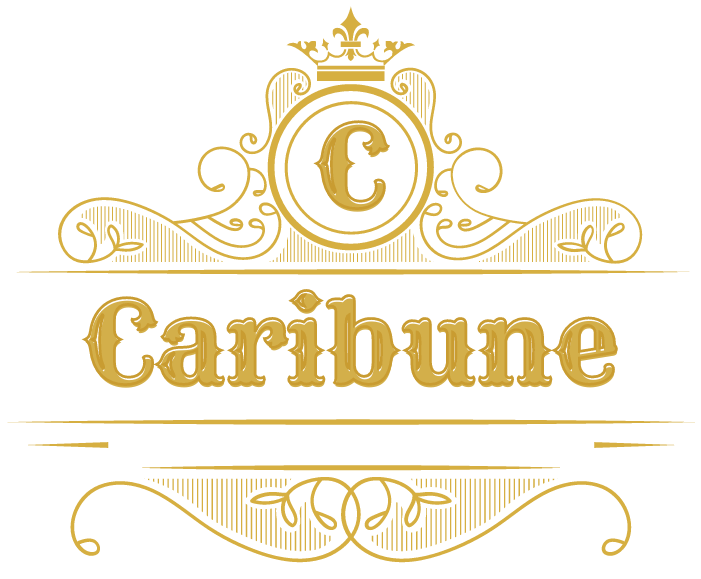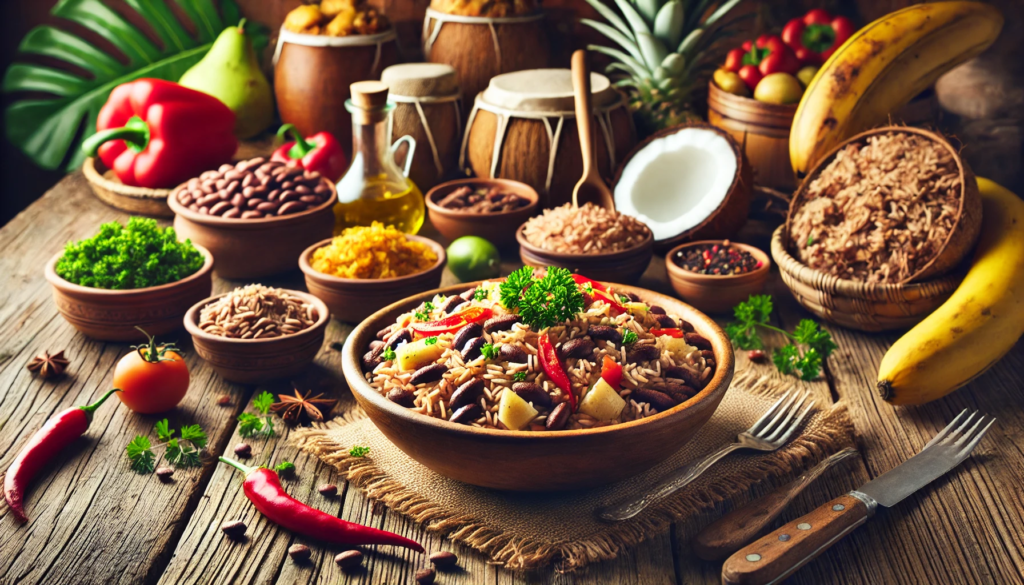Rice and beans are fundamental ingredients in Caribbean cuisine, reflecting the region’s rich cultural heritage and diverse culinary traditions. The combination of these two staples forms the backbone of many Caribbean dishes, providing both nutrition and flavor in every meal.
Across the islands, rice and beans take on different forms, from simple, everyday meals to elaborate festive dishes, each infused with unique spices and seasonings that reflect the Caribbean’s fusion of African, Indigenous, European, and Asian influences.
In this article, we’ll explore the cultural significance, variations, and culinary techniques that make rice and beans a cornerstone of Caribbean cooking.
The Cultural Significance of Rice and Beans
Rice and beans are more than just a popular food pairing; they represent the blending of cultures that make up the Caribbean identity. The introduction of rice to the region can be traced back to European colonists and traders, while beans were cultivated by the Indigenous peoples of the Caribbean long before the arrival of Europeans. African slaves brought culinary techniques and traditions with them, combining these ingredients with spices and flavors that have since become staples of the Caribbean diet.
Symbol of Resilience and Tradition
Throughout Caribbean history, rice and beans were often the most accessible and affordable ingredients, making them essential in the diet of enslaved Africans, laborers, and impoverished communities. These dishes provided sustenance and nourishment, offering a balanced source of protein, fiber, and carbohydrates.
Today, rice and beans hold a special place in Caribbean cuisine, symbolizing resilience, resourcefulness, and the ability to create something delicious from humble ingredients. They are a key part of cultural celebrations, family gatherings, and everyday meals.
Popular Variations of Rice and Beans in the Caribbean
Across the Caribbean, rice and beans are prepared in many ways, reflecting the island-specific influences and local ingredients. Each country has its own version of this classic dish, often incorporating coconut milk, herbs, spices, and meats.
1. Rice and Peas – Jamaica
Rice and peas is perhaps the most iconic rice and bean dish in Jamaica. Despite the name, “peas” refers to kidney beans or pigeon peas. The dish is traditionally flavored with coconut milk, thyme, scallions, and Scotch bonnet peppers, creating a flavorful and slightly spicy dish.
- Ingredients: Kidney beans or pigeon peas, rice, coconut milk, thyme, scallions, Scotch bonnet pepper
- Pairings: Typically served alongside jerk chicken, curry goat, or fried fish
2. Congrí – Cuba
Congrí is Cuba’s version of rice and beans, where black beans are cooked together with rice, creating a rich and flavorful dish. The beans are simmered with garlic, onions, and green peppers before being combined with the rice, allowing the flavors to meld together.
- Ingredients: Black beans, white rice, garlic, onions, green peppers, cumin, oregano
- Pairings: Often served with roast pork, plantains, or fried yuca
3. Moro de Habichuelas – Dominican Republic
In the Dominican Republic, Moro de Habichuelas is a staple dish where red or black beans are cooked with rice, along with sofrito (a blend of garlic, onions, peppers, and herbs), creating a savory and aromatic dish. This dish is commonly served at family meals and gatherings.
- Ingredients: Red or black beans, rice, sofrito (garlic, onions, peppers, cilantro), chicken broth
- Pairings: Typically served with stewed meats, grilled chicken, or seafood
4. Hoppin’ John – The Bahamas
Hoppin’ John is a classic dish found in The Bahamas and other parts of the southern United States, particularly during New Year’s celebrations. Traditionally made with black-eyed peas and rice, it is flavored with pork or bacon, thyme, and other herbs, offering a savory and hearty meal.
- Ingredients: Black-eyed peas, rice, bacon or ham hocks, thyme, garlic, onions
- Pairings: Often served with fried fish or grilled meats
5. Arroz con Habichuelas – Puerto Rico
In Puerto Rico, Arroz con Habichuelas (rice with beans) is a staple dish that accompanies many meals. The beans are typically stewed with a base of sofrito, tomato sauce, and spices like cumin and oregano, and served over rice. The dish is versatile, with variations including the use of pink beans, kidney beans, or pigeon peas.
- Ingredients: Pink or kidney beans, rice, sofrito (garlic, onions, peppers, cilantro), tomato sauce, cumin, oregano
- Pairings: Served with roasted meats, tostones (fried plantains), or pork chops
6. Gallo Pinto – Costa Rica and Nicaragua
Although not a Caribbean island, the coastal influence on Gallo Pinto, a popular dish in Costa Rica and Nicaragua, is notable. Gallo Pinto is made with leftover rice and beans (usually black beans) and is often served with breakfast, accompanied by fried eggs and plantains.
- Ingredients: Black beans, white rice, onions, peppers, cilantro
- Pairings: Typically served with fried eggs, plantains, and cheese
The Key Ingredients in Caribbean Rice and Bean Dishes
While the type of beans and the preparation methods may vary from island to island, a few key ingredients and techniques are central to the rich flavor of Caribbean rice and bean dishes.
1. Coconut Milk
Coconut milk is a staple in many Caribbean rice and bean dishes, particularly in Jamaican and Trinidadian cooking. The addition of coconut milk adds a creamy texture and subtle sweetness that balances the spiciness from Scotch bonnet peppers or other seasonings.
2. Herbs and Spices
Caribbean rice and beans are infused with fresh herbs and spices that give the dish its signature flavor. Common herbs include thyme, cilantro, and parsley, while spices like cumin, paprika, and allspice add depth and complexity.
- Thyme: A staple in Jamaican rice and peas, thyme adds an earthy, aromatic note to the dish.
- Scotch Bonnet Peppers: Often used whole in the dish to infuse heat without overpowering the flavors.
- Sofrito: A blend of garlic, onions, peppers, and cilantro used in Puerto Rican and Dominican cooking to add a savory base.
3. Rice Varieties
The type of rice used can vary depending on the region and dish. Long-grain white rice is most common, but in some variations, short-grain or jasmine rice may be used for its fragrance and texture.
4. Beans and Legumes
The choice of beans or peas varies across the Caribbean. Popular options include kidney beans, pigeon peas, black beans, and black-eyed peas, each offering a unique texture and flavor to the dish.
- Kidney Beans: Widely used in Jamaican rice and peas, they add a rich, hearty flavor.
- Pigeon Peas: Popular in Trinidad and Tobago, often paired with rice and coconut milk.
- Black Beans: Used in Cuban and Costa Rican dishes like congrí and gallo pinto, adding an earthy flavor.
Techniques and Cooking Methods
Caribbean rice and beans are traditionally cooked together in one pot, allowing the flavors to meld as the beans and rice absorb the rich broth or coconut milk. The cooking method often involves sautéing a sofrito or spice base before adding the rice, beans, and liquid, resulting in a dish that is layered with flavor.
One-Pot Cooking
The one-pot cooking method is essential in Caribbean rice and bean dishes. By cooking the rice and beans together with spices, herbs, and broth, the ingredients absorb the flavors, resulting in a dish that is rich and aromatic.
Use of Coconut Milk
In many Caribbean dishes, coconut milk is used to cook the rice, giving it a creamy, slightly sweet flavor. This technique is especially common in Jamaican and Trinidadian cuisine, where coconut milk adds depth to the dish.
Sautéing Spices and Herbs
In Puerto Rican and Dominican cooking, the use of sofrito—a mixture of garlic, onions, peppers, and herbs sautéed in oil—is a key step. This creates a flavorful base that enhances the rice and beans with bold, savory notes.
Nutritional Value of Rice and Beans
Rice and beans together provide a complete protein, making them a highly nutritious meal. Beans are a rich source of fiber, protein, and essential vitamins and minerals such as iron, potassium, and magnesium, while rice provides carbohydrates and energy.
The combination of these two ingredients offers a balanced meal that sustains energy, promotes digestive health, and provides important nutrients.
Health Benefits
- Protein: When combined, rice and beans offer all nine essential amino acids, creating a complete protein.
- Fiber: Beans are a great source of dietary fiber, which aids digestion and helps maintain a healthy heart.
- Vitamins and Minerals: Both rice and beans are rich in essential nutrients, including B vitamins, iron, and magnesium.
Conclusion
Rice and beans are more than just a meal in Caribbean cuisine—they are a symbol of the region’s rich cultural history and culinary diversity. From Jamaica’s rice and peas to Cuba’s congrí, each dish tells a story of the island’s unique blend of influences and flavors. Whether enjoyed as a side dish or the main event, rice and beans are a testament to the Caribbean’s ability to transform simple ingredients into a flavorful, satisfying feast.
For travelers and food lovers alike, experiencing the many variations of rice and beans is an essential part of exploring the Caribbean’s vibrant culinary landscape.
Frequently Asked Questions (FAQs)
What is the difference between Jamaican rice and peas and Cuban congrí?
Jamaican rice and peas typically use kidney beans or pigeon peas and are cooked with coconut milk, thyme, and Scotch bonnet peppers for a spicy, creamy flavor. Cuban congrí uses black beans, which are cooked with rice and seasoned with garlic, onions, and peppers, offering a more savory and earthy flavor.
Can rice and beans be a complete meal?
Yes, rice and beans together form a complete protein, providing all essential amino acids. They are a filling, nutritious meal that can be enjoyed on their own or paired with meats, seafood, or vegetables.
Are there vegetarian versions of Caribbean rice and beans?
Yes, many versions of Caribbean rice and beans are vegetarian by nature, using beans, rice, coconut milk, and spices without meat. These dishes can easily be adapted to suit vegan or vegetarian diets by omitting any meat-based broths or fats.
What type of beans are commonly used in Caribbean cooking?
Commonly used beans in Caribbean cooking include kidney beans, pigeon peas, black beans, and black-eyed peas. The type of bean used often depends on the country and the specific dish.
Is coconut milk necessary for making Caribbean rice and beans?
While coconut milk is a key ingredient in some Caribbean rice and bean dishes, such as Jamaican rice and peas, it is not used in all versions. For example, Cuban congrí and Dominican moro are made without coconut milk but still offer rich flavors through other seasonings and spices.
What are some common side dishes served with rice and beans in the Caribbean?
Rice and beans are often served with a variety of side dishes, including fried plantains, grilled or stewed meats, seafood, and salads. Popular accompaniments also include tostones (fried green plantains), avocado slices, and fresh salads made with local vegetables.

